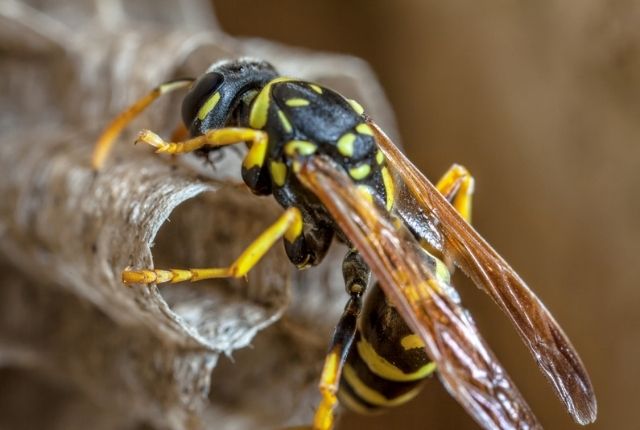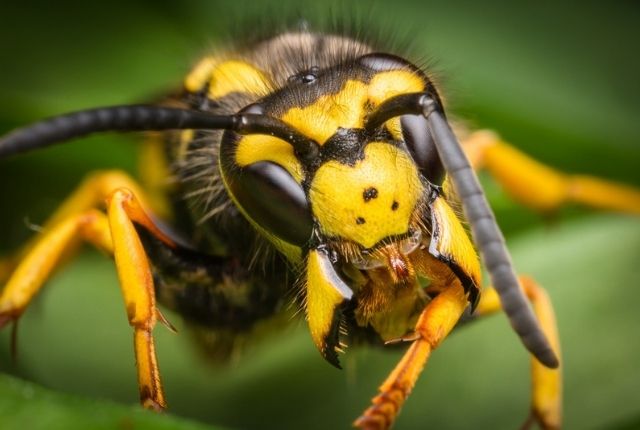Paper wasps come from Europe. They evolved to use wood and paper, two very common things in Europe throughout the past few thousand years, to make their nests. The process involves constructing a bowl-shaped form on a stem that connects it to a wall or other surface. The nest is very much open and looks like a bowl filled with large honeycombs. The honeycomb-like slots are filled with one egg each and some food to feed the larva through its transformation into a full-grown wasp. These wasps are loners, in small family groups usually all using the same nest. This is to increase the survivability of the young. More parents equal longer living offspring in the animal kingdom. Paper wasps are not especially aggressive. They are aware they are not in a large nest and when they are threatened they will try to buzz around instead of sting you. It will sting if it believes you will harm the nest however and even if there are only three they can still send you to the emergency room.
If you see an increase in wasp activity taking place around your property, contact wasp removal Burlington for quick and safe removal.
The paper wasp is brownish with yellow marks and it does resemble the yellowjacket but is much bigger than one. They are around 3/4 of an inch to 5/8 which is quite big for an insect in a temperate environment. They have antennae and six long waspy legs. They can be found throughout Europe but were brought here on sailing ships over a hundred years ago and have become a generally safe member of our ecology. Most intrusions are not generally good for the environment like the introduction of murder hornets to the US and Canada from Japan.
In the case of paper wasps, they generally build their nests on the outside of residential houses in back yards where they feel safer than in a public park like where a yellowjacket nest would be found. The nest is easy to see and is rarely hidden or inside of a wall. It can be removed at night while the wasps are asleep on it by laying a large jar over the nest and severing the connection with a flat object like a thin piece of metal or a cutting board. Once you have it take it somewhere far enough away that they won’t come back. A twenty-minute walk should suffice. Then leave them for a bit to ensure they are still asleep and remove the jar. There they will likely stay for the rest of the season.


